GoodReads meta-data is 302 pages, rated 3.64 by 85,062 litizens.
Genre: Biography, leadership
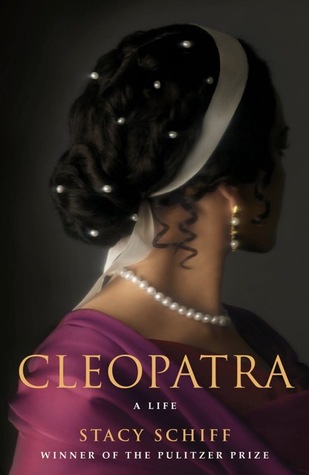
Verdict: How little we know. The cover above rather implies that ignorance with the head turned away. The fascination is evident in the number of ratings and reviews on GoodReads. The name entered into Goodle produced about 87,000,000 results.
Cleopatra (BC 69 to BC 30) has been immortalised by slot machines, board games, dry cleaners, exotic dancers, an EU pollution study, asteroid 216 Kleopatra, a perfume, the best selling cigarette in the Middle East, and many male fantasies — some acted out in film. In Sydney there is the Cleopatra Gentlemen’s Club in Wetherill Park, Cleopatra’s Body and Nails in the City, and Cleopatra Hair Design in Bondi Junction. By one estimate there are more than a thousand books with her name in the title to go with five ballets, forty-five operas, and seventy-seven plays, as well as at least seven Hollywood films. And that list only scratches the surface. See the piece by Chip Brown in the National Geographic pictured below.
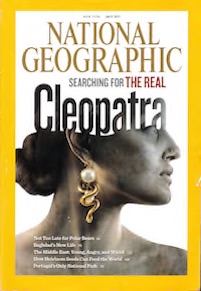
Cleo has inspired a lot and since her name is out of copyright free use has been made. Very free use indeed because we know very little about her. As nature abhors a vacuum imagination – often puerile, usually male – has flowed in to that void.
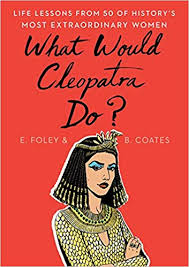
That other well-known Egyptian queen, Nefertiti, lived and died nearly a thousand years before Cleopatra. Yet we know more about her, what she looked like, wore, and did from surviving records, many long buried in tombs and sand, than about Cleopatra. Most of the records made in Cleo’s time were destroyed in the endless conflicts before they could be gathered, preserved, and archived.
As the author makes clear, writing a biography of someone of whom hardly any contemporary records remain is a challenge. The only evidence of Cleopatra as a person is one signature on a routine order shown below.
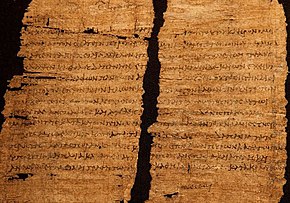
There are also stylised images on some coins.
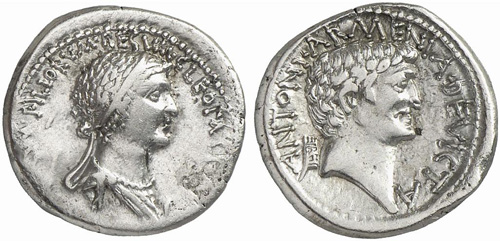
Otherwise, she is but a name on lists of pharaohs over which the encrustations of myth have grown gradually substituting for and then replacing the reality.
It was a hundred years after her death that the stories we still have in whole or in fragment were composed. They may have been based on earlier sources that are now lost to us in the convulsions of the Roman world and the ages that followed, or in the absence of evidence they may have been spun out of whole cloth. We will most likely never know.
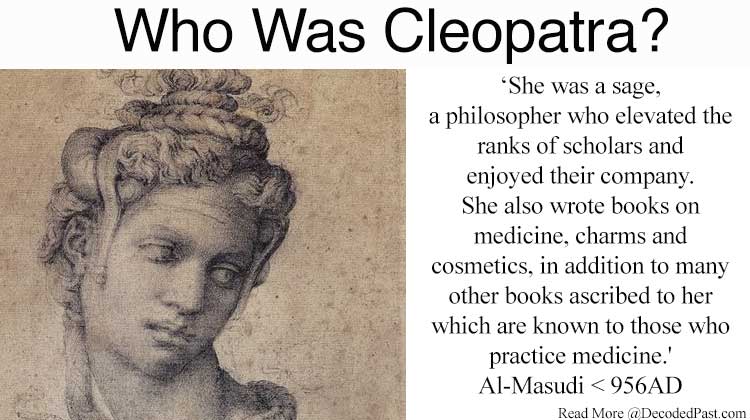
The result is a lot of speculation between the historic facts that Egypt’s Ptolemaic rulers had paid a huge tribute (most in wheat) to Rome for a protective alliance, that Pompey fled to Egypt, that Julius Caesar followed, that he liked Egypt… The account is peppered with ‘may have,’ ‘must have.’ ‘could have,’ and other tentative subjunctives.
The book is a pastiche selecting from a variety of sources, some perhaps more reliable than others, though there is no indication of which is which and why one is better than another. Rather credit seems to be given to text insofar as they affirm Cleopatra as an intelligent and resourceful ruler, rather than those that treat her as Eve with apple and Kohl eye makeup. That is my sympathy, too, but I would like some reasoning or evidence to confirm the supposition.
To have ruled Egypt for more than twenty years surrounded by enemies in court, in the country, and beyond its borders certainly suggests that she had more than sex appeal. True. But the book barely mentions anything she did as ruler, apart from fending off members of her own family out to depose and replace her. Did she make alliances with some of the lords of the land? Did she enrich priests so that they would sing her praises? Did she distribute free lunches? The author does say that she learned to speak Egyptian unlike the others in her Greek family. That is a nice touch but what did she do with it I wonder.
According to Wikipedia she did indeed offer free lunches at least once by distributing grain during a famine, and tried to impose price controls at another point. But like those later authors whom she reviles, this writer is much more interested in her liaisons with the Romans than with her rule.
Plutarch wrote a biography of Marcus Antony in which Cleopatra appears and in this as in many other instances he is probably the most accurate sources available.
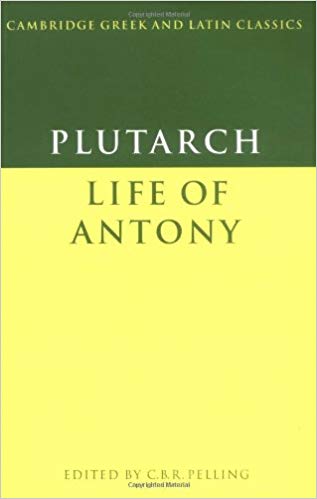
He wrote in Greek, her maternal tongue, about a hundred years after her death, using the accounts of Philotas of Amphissa who had lived in the Ptolemaic court and seen and heard some of the people and events with his own eyes and ears. Philotas’s work has been lost to time.
This book is certainly well written, and the recitation I listened to via Audible is excellent, but the substance did not quite deliver the account I wanted of the ruler. Perhaps Duane Roller, ‘Cleopatra’ (2016) might be more to my taste if and when I want to try again.
Though I cannot close without remarking that the Brown piece in the National Geographic reads like Brown went to Egypt and saw the sun, the sand, the monuments, the vestiges with his own eyes, however little of it remains from Cleopatra’s world, and this book has no such tactile emanations.
Cleopatra has been a character in a number of Roman krimis I have read. There she is treated at times as a clever strategist, as a hormonal fiend, as a self-serving schemer, and more. Each version seems to have only one dimension.
Skip to content
